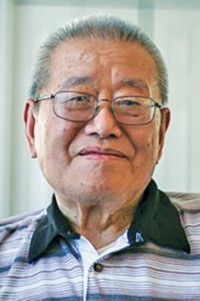Advertisement
Grab your lab coat. Let's get started
Welcome!
Welcome!
Create an account below to get 6 C&EN articles per month, receive newsletters and more - all free.
It seems this is your first time logging in online. Please enter the following information to continue.
As an ACS member you automatically get access to this site. All we need is few more details to create your reading experience.
Not you? Sign in with a different account.
Not you? Sign in with a different account.
ERROR 1
ERROR 1
ERROR 2
ERROR 2
ERROR 2
ERROR 2
ERROR 2
Password and Confirm password must match.
If you have an ACS member number, please enter it here so we can link this account to your membership. (optional)
ERROR 2
ACS values your privacy. By submitting your information, you are gaining access to C&EN and subscribing to our weekly newsletter. We use the information you provide to make your reading experience better, and we will never sell your data to third party members.
Synthesis
An Unsung Hero In Antimalarial Drug Discovery
December 21, 2015
| A version of this story appeared in
Volume 93, Issue 49
While celebrating Youyou Tu’s achievements in antimalarial therapy and her receipt of the 2015 Nobel Prize in Physiology or Medicine (C&EN, Oct. 12, page 7), it’s worthwhile to note that the discovery was truly a team effort in nature with many unsung heroes who deserve recognition. In particular, a natural product chemist should be remembered for his pioneering work.
The plant Artabotrys uncinatus is an uncommon perennial vine growing in China’s Guangdong and Hainan provinces. It was used by local people to treat malaria symptoms. Scientists working on Project 523 found roots of the folklore medicine had antimalarial activity. Xiaotian Liang from the Chinese Academy of Medical Sciences’ Institute of Materia Medica in Beijing was assigned the task of finding the active ingredients. In the early 1970s, Liang’s team isolated a compound later known as yingzhaosu A. Initial structural work ran into difficulty because of the molecule’s thermal stability, which was atypical of peroxides. After many failed attempts, Liang made the groundbreaking discovery that yingzhaosu A possesses a novel peroxide group. Pharmacological tests confirmed its bioactivity. Because of supply issues, yingzhaosu A was not developed further, but it helped facilitate structure work of artemisinin.
Tu accomplished the isolation of artemisinin, but it was Weishan Zhou’s team at Shanghai Institute of Organic Chemistry who carried out research on its structure elucidation and synthesis. For some time, Zhou was puzzled by the correct structure partly because of the drug’s thermal stability. An important clue emerged in April 1975 when one of his colleagues attended a Project 523 meeting where Liang reported yingzhaosu A contained a peroxide group. Zhou followed this lead, and structure work went smoothly.
Contrary to a popular myth, yingzhaosu A is actually the first antimalarial natural product discovered from traditional Chinese medicine that contains a peroxide bond. Artemisinin is the second of such compounds in terms of timing of discovery. Declassified Project 523 meeting records indicate that structure determination of yingzhaosu A was well under way in March 1972 while Tu’s group had yet to start work on isolation of the active ingredients from Artemisia annua.
Liang was responsible for structure determination of a few dozen natural products derived from traditional Chinese medicine. He served as an editor for Tetrahedron and Tetrahedron Letters. Liang was well respected and considered by many to be a man with strong ethics. He never hesitated to help whoever turned to him for advice, but he declined to take credit for his contribution and turned down many offers to coauthor papers. An advocate for scientific integrity, Liang openly criticized research misconduct and scientists who exaggerated the significance of their own work. His message is still relevant for China today.
Liang received a Ph.D. in chemistry from the University of Washington, Seattle, in 1951. He did postdoctoral research at Harvard University under the late Paul Bartlett. Liang passed away in 2009. He was 86.
I should probably mention that I received an M.S. in medicinal chemistry in 1984 from the Chinese Academy of Medical Sciences under the direction of professor Liang. I also served as an undergraduate intern in 1981 in professor Zhou’s lab at Shanghai Institute of Organic Chemistry.
Tianhan Xue
Arcadia, Calif.



Join the conversation
Contact the reporter
Submit a Letter to the Editor for publication
Engage with us on Twitter